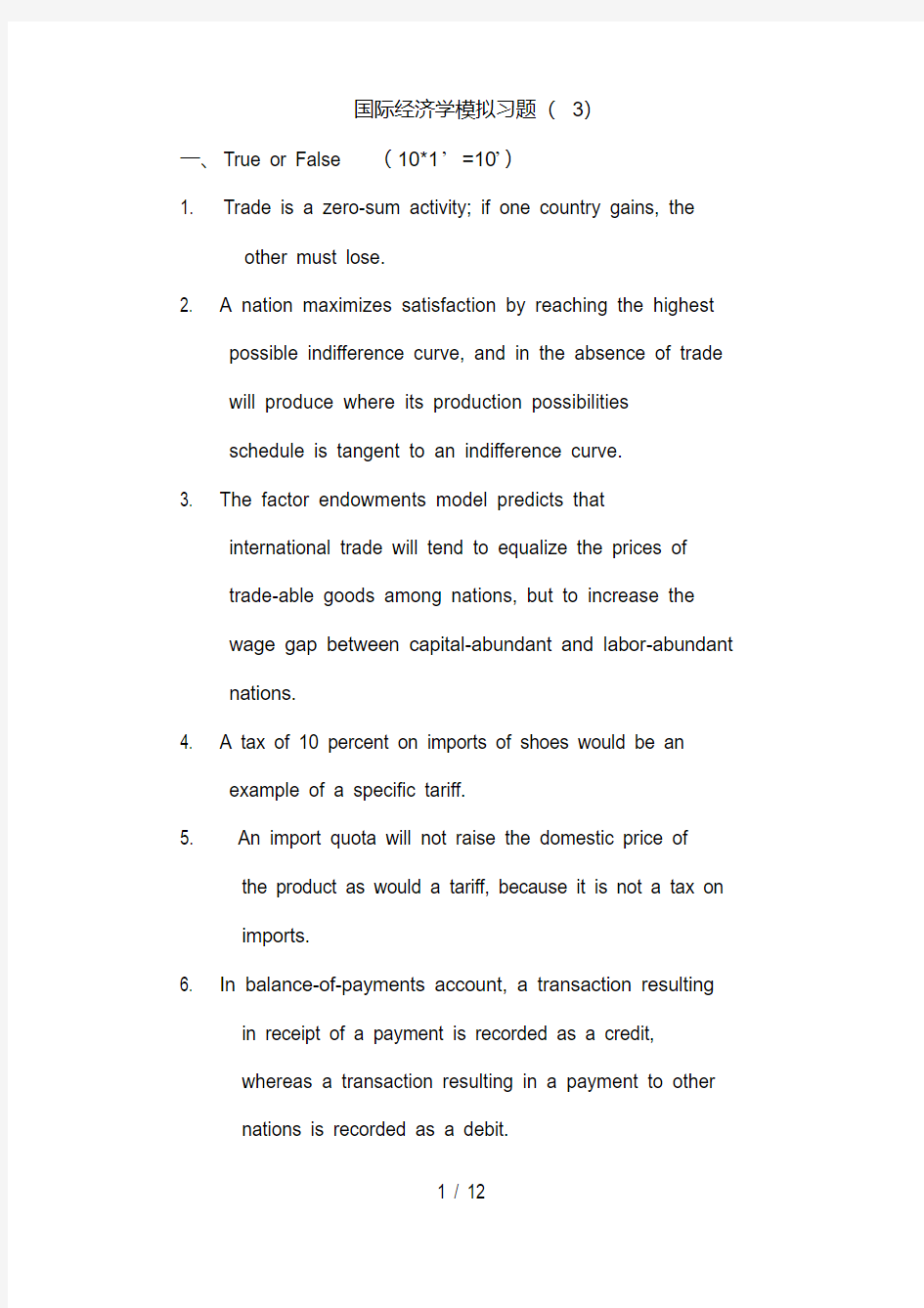
国际经济学模拟试题英文含答案
- 格式:pdf
- 大小:21.46 KB
- 文档页数:12


国际经济学模拟习题(3)
一、True or False (10*1’=10’)
1. Trade is a zero-sum activity; if one country gains, the
other must lose.
2. A nation maximizes satisfaction by reaching the highest
possible indifference curve, and in the absence of trade
will produce where its production possibilities
schedule is tangent to an indifference curve.
3. The factor endowments model predicts that
international trade will tend to equalize the prices of
trade-able goods among nations, but to increase the
wage gap between capital-abundant and labor-abundant nations.
4. A tax of 10 percent on imports of shoes would be an
example of a specific tariff.
5. An import quota will not raise the domestic price of
the product as would a tariff, because it is not a tax on
imports.
6. In balance-of-payments account, a transaction resulting
in receipt of a payment is recorded as a credit,
whereas a transaction resulting in a payment to other
nations is recorded as a debit.
7. Because they do not include an exchange of goods or
services, unilateral transfers do not appear on a
nation's balance of payments account.
8. David Hume was one of the first economists to provide
analytical support for mercantilist trade policies.
9. A nation would be most likely to find its trade balance
improving after a currency depreciation if that nation’s
demand for imports and foreign demand for its exports
was very inelastic.
10. A nation with neither a balance of payments surplus nor
a balance of payments deficit is said to be in internal
balance.
二、choices(15*3’=45’)
1. The law of comparative advantage
a). was ratified by the World Trade Organization
b). explains how all countries can benefit when each
specializes in producing items in which it has the greatest
relative efficiency
c). explains how only the most efficient nations can benefit
from trade
d). is used to evaluate a country’s military strength
2. The theory of absolute advantage was developed by
a. the Mercantilists
b. David Hume
c. Adam Smith
d. David Ricardo
3. David Ricardo developed the principle of comparative advantage showing that
a. a nation must be the least-cost producer of a good in order
to export that item
b. no nation could have an absolute advantage in all goods
c. in a two-country example, only one nation can have a
comparative advantage
d. even a nation that has lower productivity in all goods can
benefit by exporting the item in which it is relatively less
inefficient
4. An indifference curve
a. shows that most people really are indifferent about
international trade
b. shows the demand preferences of consumers
c. reflects the relative costs of production within a nation
d. indicates how much labor a country has
5. To maximize its satisfaction, a nation will ensure that its terms-of-trade line